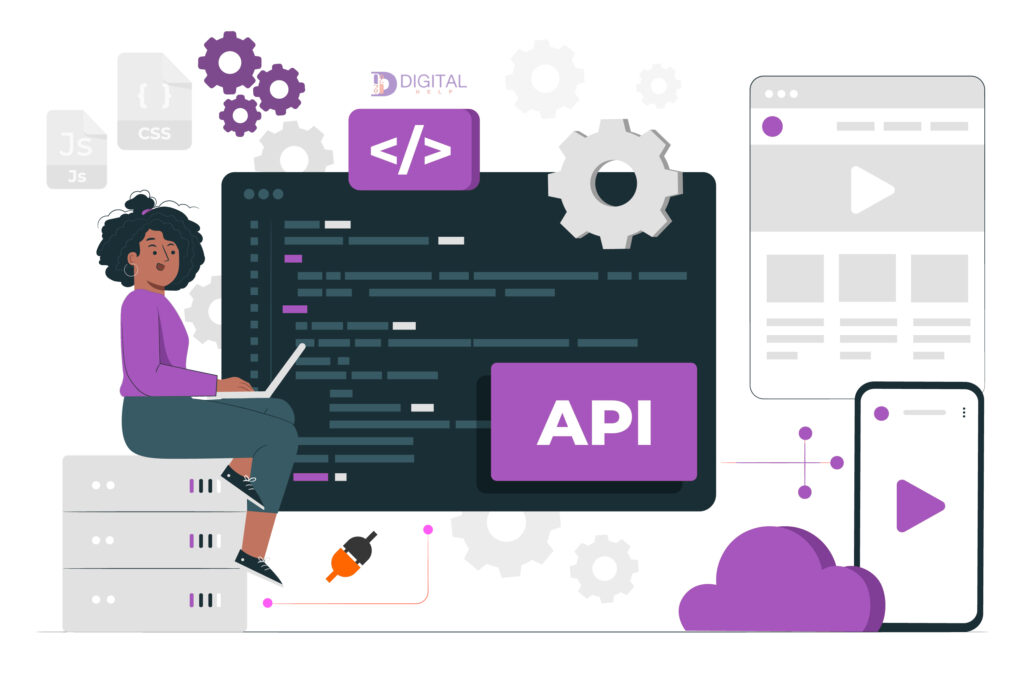Mastering JavaScript Development: A Comprehensive Guide
JavaScript is the backbone of react web development, enabling developers to build interactive and dynamic websites. It’s the most popular programming language for creating engaging user experiences on the web. From simple animations to complex web apps, JavaScript powers the front end of countless websites.
Its versatility allows developers to create applications that are not just visually appealing but also highly functional. JavaScript integrates seamlessly with HTML and CSS, creating a powerful trifecta that forms the foundation of most modern websites.

Key Features of JavaScript
JavaScript is loaded with features that make it a versatile choice for developers, especially for node js developers who work on both front-end and back-end environments.
It supports event handling, which allows applications to respond to user interactions like clicks, mouse movements, and keyboard input.
DOM manipulation is another standout feature, enabling developers to dynamically change the content, structure, and style of web pages without reloading them.
Asynchronous programming is a key component, allowing developers to perform multiple tasks simultaneously, enhancing the performance and responsiveness of applications.
JavaScript vs. Other Programming Languages
JavaScript’s unique capabilities set it apart from other programming languages like Python, Ruby, and PHP. In react development, JavaScript’s ability to create highly interactive user interfaces makes it an indispensable tool.
While Python and Ruby excel in back-end development, JavaScript dominates the front-end, thanks to its event-driven, non-blocking I/O model that optimizes web performance.
Unlike compiled languages, JavaScript runs directly in the browser, allowing developers to see changes instantly, which speeds up the development process and enhances the user experience.
Setting Up Your JavaScript Environment
To start coding in JavaScript, you need a proper development environment. For react software projects, setting up the right environment is crucial.
Popular editors like Visual Studio Code, Sublime Text, and Atom provide integrated development environments (IDEs) that support JavaScript, offering syntax highlighting, auto-completion, and debugging tools.
Setting up a local server using Node.js is a common practice among developers, as it allows them to test their JavaScript code in real-time. Ensuring that your environment is correctly configured can significantly boost your productivity and reduce errors.
Using Online Code Editors vs. Local Setup
Choosing between online editors and local setups can impact your development workflow. Online editors like CodePen, JSFiddle, and Repl.it are excellent for quick prototyping and sharing code snippets.
However, for complex projects like full stack javascript applications, local setups provide more control and flexibility.
Local environments allow developers to use version control systems like Git, manage dependencies efficiently, and perform in-depth debugging. They also support a wider range of tools and plugins, enhancing the overall development experience.


Core Concepts of JavaScript
Understanding the core concepts of JavaScript is crucial for any developer, especially in react front end projects. Variables are used to store data, and understanding their scope—whether global or local—is key to avoiding bugs.
JavaScript supports various data types, including strings, numbers, arrays, and objects, which allow developers to store and manipulate different forms of data.
Control structures like loops and conditionals help in creating logic within the application, making the code more dynamic and responsive.
Introduction to Functions and Events
Functions and events are fundamental components of javascript for web development. Functions allow you to encapsulate code into reusable blocks, reducing redundancy and making the codebase more manageable.
Events, such as clicks or keystrokes, trigger specific functions, allowing the application to respond to user inputs.
This interaction between functions and events is what brings web pages to life, enabling real-time updates and seamless user experiences without the need for constant page reloads.
Popular JavaScript Frameworks and Libraries
JavaScript’s popularity is amplified by its extensive ecosystem of frameworks and libraries, such as React, Angular, and Vue.js. These tools simplify the development process, allowing developers to build complex applications with less code.
JavaScript app development is streamlined through these libraries, which provide pre-built components and templates. React, for instance, focuses on building reusable UI components, making it ideal for single-page applications.
Angular offers a full-fledged framework with everything from form validation to routing, while Vue.js combines the best of both worlds with a gentle learning curve and powerful features.
Choosing the Right Framework for Your Project
Selecting the right framework is crucial, especially when dealing with react dom development js. React is renowned for its virtual DOM, which updates only the necessary parts of the web page, making it highly efficient.
Angular, on the other hand, is perfect for building enterprise-level applications with its robust set of tools and built-in functionalities.
Vue.js is great for smaller projects or when you need a flexible, progressive framework that can easily integrate with other libraries.
Understanding your project’s requirements will help you choose the right framework and make the development process smoother.


Best Practices for JavaScript Development
Adhering to best practices is essential for writing clean and maintainable code, particularly in react website development. Proper indentation, consistent naming conventions, and modular code organization are some of the fundamental practices that enhance code readability and ease collaboration.
Avoiding global variables, using comments effectively, and employing design patterns like MVC (Model-View-Controller) are also critical in maintaining a clean codebase.
By following these practices, developers can minimize errors, improve code quality, and make future updates easier to implement.
Importance of Testing and Debugging
Testing and debugging are critical in ensuring the reliability of JavaScript applications. In fullstack javascript development, automated tests help catch errors early in the development cycle, reducing the time spent on fixing bugs later.
Debugging tools, such as Chrome DevTools, provide powerful insights into the application’s performance, helping developers identify bottlenecks and optimize code.
Unit testing, integration testing, and end-to-end testing are all essential strategies that contribute to the overall quality of the software.
Common JavaScript Mistakes to Avoid
Security and speed are key components of every online application. At Digital Help Ltd., we emphasize these criteria in our JavaScript development process to guarantee that your online apps are safe and perform well.
We use a variety of security techniques to secure your web application from possible attacks and vulnerabilities. This encompasses input validation, authentication, authorization, and data encryption. We maintain the security of your online application and the privacy of your users by following industry standards for security.
In addition to security, we prioritize improving the speed of your online application. This includes lowering load times, reducing server response times, and improving front-end performance. Our objective is to deliver a speedy and efficient user experience that will keep your visitors interested and happy.
Tips to Optimize Performance
Optimizing JavaScript performance is key to ensuring a smooth user experience, particularly in react js development. Reducing DOM access, minimizing HTTP requests, and using lazy loading techniques can significantly speed up web applications.
Tools like Webpack can bundle and minify JavaScript files, reducing the load time. Profiling your application using performance monitoring tools helps identify areas that need improvement, ensuring your JavaScript code runs efficiently and effectively.


Future of JavaScript Development
The future of JavaScript is bright, with continuous advancements in frameworks, new APIs, and evolving best practices. Developers specializing in professional javascript for web developers can look forward to more robust tools and improved language features.
Technologies like WebAssembly are expanding JavaScript’s capabilities beyond traditional web development, enabling faster and more powerful applications. Keeping up with these trends will ensure that JavaScript remains at the forefront of modern web development.
How to Keep Your Skills Updated
To stay on top of JavaScript’s ever-changing landscape, continuous learning is key. Online courses, developer forums, and workshops offer valuable resources.
Engaging with the community through events or projects in react development js can also provide insights into the latest best practices and techniques.